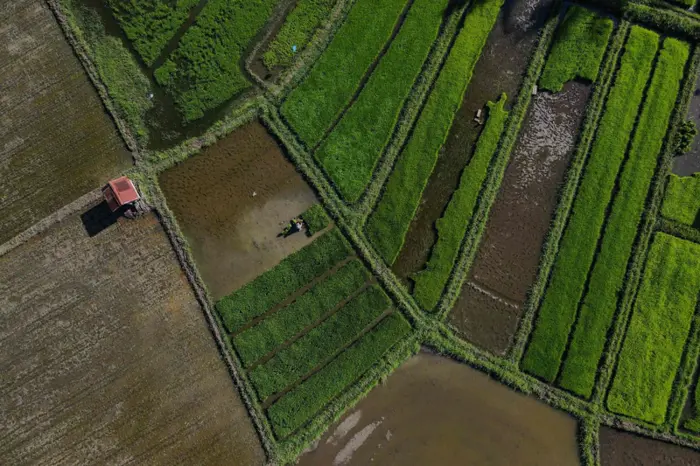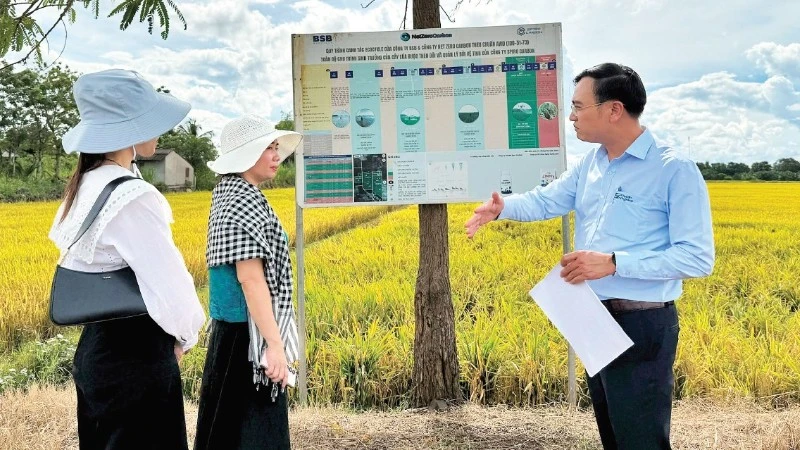Tags
Indonesia needs smarter farming, not more farmers: Comment
By I Dewa Made Agung Kertha Nugraha

JAKARTA: In the context of rising global food insecurity and climate uncertainty, it may seem counterintuitive to suggest that Indonesia, home to over 280 million people, does not need more farmers.
However, this is precisely what the data tells us. The country’s food production trajectory, particularly in rice, has significantly improved despite a dramatic decline in the agricultural labour force.
In 1980, more than 55 per cent of Indonesia’s workforce, approximately 40 million individuals, was employed in agriculture. By 2023, this figure had fallen to approximately 28 per cent, or around 29 million people.
Tens of millions have exited the sector, pursuing opportunities in industry and services. Yet during this same period, Indonesia’s rice production has not only remained resilient, it has increased substantially.
Annual production rose from 30 million tonnes in the early 1980s to over 53 million tonnes in 2023, representing an 82 per cent increase.
Rice yields per hectare have also tripled, from approximately 1.8 tonnes in the 1960s to 5.92 tonnes today.
Harvested areas have grown by nearly 49 per cent, primarily through intensification strategies such as double cropping and improved irrigation.
This trend indicates a structural shift from labour-intensive to input and technology intensive farming systems.
Indonesia’s agricultural transformation can be attributed to a series of interventions spanning several decades. A key turning point was the Green Revolution, during which high-yielding rice varieties replaced traditional cultivars
By the mid-1980s, most rice farmers had adopted these improved varieties. Government initiatives such as the Integrated Cropping Calendar and the “Rice 400” programme enhanced planting frequency and land utilisation (MDPI, 2022).
Between 1975 and 2000, fertiliser use increased ninefold, from 0.6 million to 5.9 million tonnes annually, supported by the government’s BIMAS training programme and credit subsidies.
Mechanisation followed: Modern rice planters today can seed a hectare in four hours, compared to 25 days using traditional methods, reducing production costs by up to 70 per cent.
Infrastructure investments in irrigation, roads and post-harvest systems laid the foundation for further intensification. This combination of high-yield inputs, mechanisation and targeted state intervention has allowed Indonesia’s farmers to produce significantly more with less labour.
The result is a system capable of feeding the nation, and potentially others. The strongest validation of this shift comes from recent national production records.
In 2023, Indonesia produced 53.98 million tonnes of unhusked rice, equivalent to 31.1 million tonnes of milled rice, the highest level in its recorded history.
The Agriculture Ministry’s 2024 target of 32 million tonnes was exceeded, and the United States Department of Agriculture now estimates that Indonesia will produce 34.6 million tonnes in 2024/25, surpassing Vietnam and Thailand to become South-East Asia’s largest rice producer.
As of May, national rice reserves held by Perum BULOG reached 3.7 million tonnes, the largest since BULOG’s founding in 1967, and exceeding even the peak stockpiles during the 1984 self-sufficient period.
Projections suggest Indonesia may not need to import rice until at least 2026. President Prabowo Subianto has ordered the construction of emergency warehouses to manage the unexpected surplus.
The consequence of these gains is reshaping the regional rice trade. Countries like Vietnam, Thailand and Myanmar, longstanding rice exporters to Indonesia, are now searching for alternative markets as Indonesia exits the import demand curve.
Indonesia’s progress stems from strategic investments rather than from expanding the number of farmers.
Initiatives such as Oplah (land optimisation), PAT (pumped irrigation for rainfed fields), cetak sawah (new land conversion) and additional irrigation from the Public Works Ministry are expected to collectively contribute over six million tonnes of additional rice output in 2025.
Globally, high-performing food systems are characterised by small agricultural labour shares. The Netherlands, with only two percent of its workforce in agriculture, is the world’s second-largest food exporter. South Korea and Japan, both with just three to five percent of their population farming, remain self-sufficient in rice.
Indonesia is now moving in that direction. The younger generation of Indonesian farmers is increasingly equipped with drone technology, automated machinery and data-driven decision tools.
As long as they have access to capital, seeds, fertiliser and digital infrastructure, each farmer can produce enough to feed many.
Indonesia does not need to reverse labour migration from the countryside. Instead, it must continue to invest in technology, infrastructure, agronomic education and value chain integration.
The data is unambiguous: Even as the agricultural workforce declined by 70 per cent since 1980, rice output has reached record highs.
By focusing on productivity rather than manpower, Indonesia has secured food sovereignty, regional competitiveness and economic resilience.
The future of Indonesian agriculture does not rest in expanding its farmer base, rather it rests in making each farmer smarter, more efficient and more empowered.
A smaller, technologically sophisticated farming population is not a weakness; it is the hallmark of a modern, sustainable food system. – The Jakarta Post/ANN
The writer is a food policy expert and co-founder and advisor of the Indonesia Food Security Review (IFSR). The views expressed here are personal.
https://www.thestar.com.my/aseanplus/aseanplus-news/2025/06/02/indonesia-needs-smarter-farming-not-more-farmers-commentPublished Date: June 2, 2025






